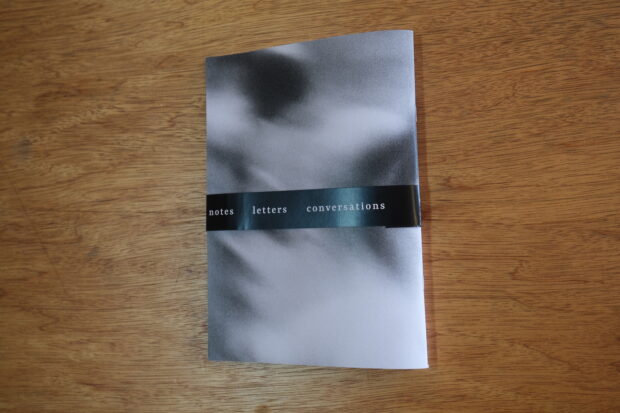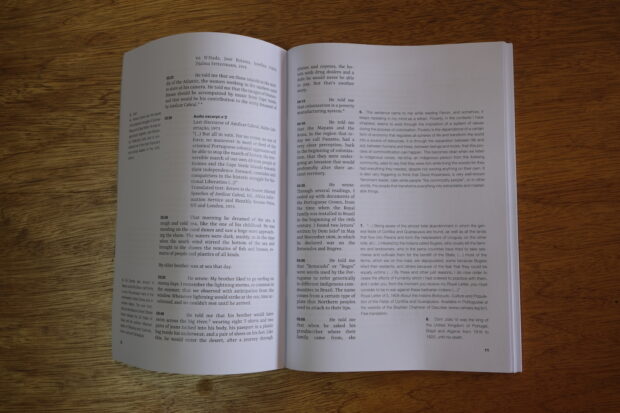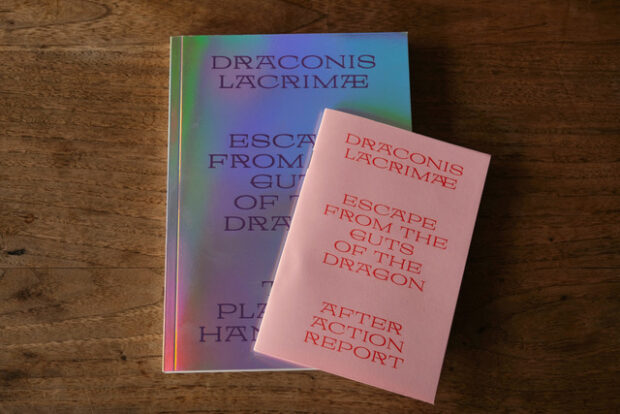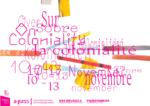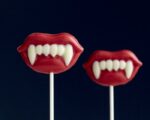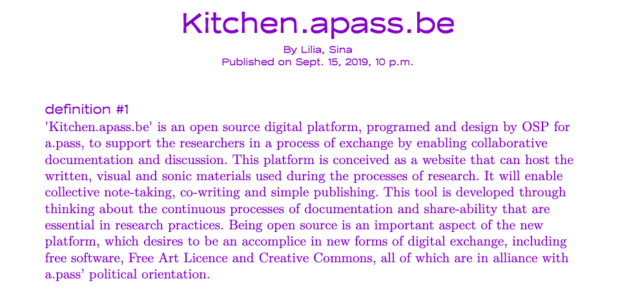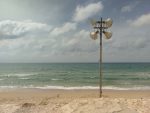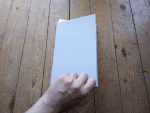On July 8-10, 2020 a.pass has hosted the conference Research Futures. The conference took the form of a gradually expanding meeting of practitioners in the fields of art, education and artistic research. The conference was initiated by a.pass in collaboration with four other institutions of artistic research participating in a.pass' comparative benchmarking study: Dutch Art Institute, Jan Van Eyck Academy, UNIARTS Helsinki and Royal Academy of Fine Arts Antwerp. The conference brought representatives from these five institutions together with professionals working in the field of education, arts, culture, artistic research, curation and activism to expand the result of the comparative study towards a series of questions concerning the futures of artistic research in relationship to its institutions.
As a publicly funded educational platform, a.pass is reviewed by the ministry of education in regular five-year intervals. With the next review process underway, a.pass took the opportunity to propose a collaborative process of self-evaluation to four other educational institutions in the field of artistic research. This process was motivated by a desire to establish a platform for mutual criticality where institutions of artistic research are not pushed to compete against each other, but can meet as partners sharing many of the same stakes. This critical intra-vision is also a balancing measure to the tendencies of such evaluations to produce an equalizing standard in a respective field of cultural production. Instead we aimed to understand, compare and strengthen our differences, in order to create greater specificity and add complexity to the developing field of artistic research.
By proposing the conference we wanted to better understand what is the range of educational and institutional strategies and practices operating in the field of artistic research today. Where do we see common struggles, pitfalls and current problematics with respect to our concerns with inclusivity, sustainable support structures, institutionalization of artistic research and politics of publication? By posing these questions we wanted to compare ourselves to the future: what are possible scenarios for artistic research to continue its contribution to the field of artistic development and production, and how can these contributions respond to the changing social realities of a challenging future?
On day one the representatives of the contributing institutions met to review the process of self evaluation so far. Moderated by Delphine Hesters, the independent researcher who compiled the comparative study, we looked for commonalities and differences between our institutions and how they operate and addressed the challenges we outlined together in our shared reports.
For Day 2 of the conference we invited ca. 20 practitioners and professionals from the field of cultural production, education and artistic research to come together with us in a working session dedicated to the four topics proposed on day one. Gathered around the topics in groups, the main objective was for each group to critically develop relationships between present conditions and implications and their future scenarios. Each group was accompanied by a Reporter, an artistic research practitioner whom we asked to develop and facilitate a specific mode of conversations among the participants of their Table, and who took on the task of compiling a report on the work of the Table for the public discussion of Day 3.
Introduction to Day 3
[video width="1920" height="1080" mp4="https:///www.apass.be/wp-content/uploads/2020/10/Future-Research-Conference-introduction.mp4"][/video]
The Introduction brought back some question and topics of the Groups of Day 2 to Day 3:
- We must be aware of the different understandings of AR present in the room
- What do we mean by collectivity and inclusion?
- In connection to the PhD in the Arts boom: is academia a refuge for the artist?
- How and why are theaters, museums and other art institutions committing to AR?
- What different culture of/for AR to cultivate?
Reports by the Reporters
[video width="1440" height="1080" mp4="https:///www.apass.be/wp-content/uploads/2020/10/future-research-conference-Tables-smalll-2-1.mp4"][/video]
Table 1 Report
Kristien Van Den Brande
► Practice Presentation
INSTITUTIONAL AUTONOMY WITHIN LARGER SYSTEMS
Tackled through a role playing game.
Roles:
teacher
dreamer (instagram influencer with a fashion line)
uber-socialist (young artist)
rebel (black-block activist seen as vandal)
archivist (big data manager)
Context:
- categorisation and segregation of fields within arts (educational, artistic, social practices) are working against the transdisciplinary conception of artistic research
- The condition of partial identities: being a part of multiple systems at the same time
- What are the expectations and questions of the cultural/educational sector towards institutions and practitioners of artistic research? eg: a theatre: why do they engage with AR?
- What are the (dis)advantages of being part of a bigger (academic) structure?
2 problems:
What are the larger systems? (funding bodies, a bigger academic structure, art/social work/science, allies of AR). Why do we call them ‘larger’?
Is the word ‘autonomy’ creating an interesting horizon for the discussion? (Institutions are de facto mediators between (related) individuals who belong to other or larger systems. Autonomy as the awareness of non-autonomy.)
- Larger systems
Instead of making an exhaustive list of ‘larger systems’, we created a (more or less) fictitious dystopian* world in which to position the question of (institutional) autonomy. The idea was to create 3 stages (rise, establishment, fall) of a dystopia, and to see how (individual and institutional) resistance and collaborations* operate in every stage.
*relative term (where does it touch on utopia? Rise and fall have interwoven features.)
*in the double sense: in the positive sense, and in the sense of (un)consciously being on the side of what is criticized.
What were the features of the world:
- complete commodification: no more public space, no more commons, instrumentalisation of art, art as a dialogic practice no longer recognized as art, false beliefs in the politics of images (protest is fashionable), always be positive (instagram culture) and gaslighting, neutrality of data, prevalence of entertainment industry
- Radical exclusivity (segregation, nationalism, art having to express predefined values, ‘inclusive’ and ‘participatory’ becoming a facade for its opposite
- Dominance of the virtual (over the sensorial, surveillance capitalism, ip-ification)
- Money making more money
- Mass unemployment
Over-bureaucracy and looming of legal threats (seeking legal representation for conflict in the absence of a society of trust)
- Wrong horizon of the word ‘autonomy’
Philosophically we are probably aligned in thinking entanglements rather than autonomy (Rancière, Donna Haraway, Tim Ingold). The only autonomy is an awareness of our non-autonomy.
Creates a shift in the questions we can/should ask?
Instead of thinking the borders of an institute, focusing on connecting lines: how to generate feedback-loops between ARers - the institute - other systems?
Strategies
- What instituting is needed: turning bureaucratic requirements from funding bodies into occasion for conceptualizing positions (eg this conference, relation to ones own board and GA: how to put it together, how to sustain and undermine its authority)
- Role play in reality: the question of ‘who do you work for?’. Positioning the discourse/question to make visible ones alliances.
- Methodologies of production (that include relation) is what is being produced in AR (eg: contracts)
- Building the archive of methodologies, strategies - who owns the archive?
! Time-factor: what is the life span of an artist-run organisation, a research institute, a board.
- ANNIHILATION
How to deal with the double threat of annihilation of the institute (it wants to be open to change) + the institute that takes care of itself when it panics?
Threat comes from
- AR itself (if AR includes the production of methodologies of production)
- Funding bodies that understand how we establish and practice interdependence
- Movements like #metoo, blm, collaborative structures that are not recognized by the board (eg: witte de with, netwerk aalst)
Strategies?
Open discussion after the presentation:
> “Me too” harassment, Black Lives Matters are all examples that need quick institutional responses but we are confronted with the SLOWNESS OF THE INSTITUTION. There is the threat of annihilation but also the institute takes care of its own survival. The moment of panic is very tricky! Which strategies do institutions have to deal with those panic moments? Example of criticism: Witte de Wit had to deal with its colonial past: they spend a long period of time in attempt to change the name and then director put out a new program. But corona and black lives matter happened and things escalated because institutions were too slow and got heavily criticized. An Institute is slow to react and there is a precarity within an institute that needs to be sustained by its partners.
> What strategies can we think of to make such transitions possible, considering the kind of forces in question? Institutional memory should trace those moments and share the archive of these transitions.
> All institutions are hierarchical so we could talk of institutional schizoanalysis. For my experience, at X university, when there is a personal change, everything changes . It's faster if the person at the top takes decisions already because of peer pressure: sometimes it can be interesting for peers to point out the weak points. At X academy there were ongoing debates and in two days the director reacted. We have to help each other (peers to director etc...). How do you become a better director and person?
> What kind of feedback loops do we organize in order to catch up?
> I'm happy that institutions are slow. Change is also slow. We are looking for ways to move together. The legal paradigm in which we need to inscribe in is organized hierarchically. To balance insecurity of AR and have an institution that gives you the opportunity to do the research.
> People are divided in the classroom and I have the responsibility as a professor. We still don't recognize structural racism etc.. there's a lot to do. How fast can we catch up without making a quick fix? “Not too know” it's not good from my position while the world is on fire!
> It is problematic having to respond fast because you are giving yourself the authority to do it. How to create a place of discussion instead of decision?
> A level of transparency is needed so one can see the progresses. With opacity of institutions, there is no sense of what is possible.
> there is a double bind of slowness/fastness. Slowness is resistance but “the world is on fire” and how do you respond? Maybe a way forward is in relation to what's happening to representative democracy (in Belgium). How to make it more participatory? You don't abolish existing institutes but you establish a faster reacting extra part of it. Could there be a way to make debate platforms in a more continuous manner and not ad hoc as a way to combine qualities of fast and slow.
> “you have to be fast and you can't be wrong!” doesn't sound very interdependent.
> don't forget that certain regulations come from a want, they are there for a reason.
Table 2 Report
Philippine Hoegen
► Practice Presentation
Internal Institutional Structures for Instituting Artistic Research
Introduction
The aim of the discussion about internal institutional structures for instituting artistic research was to take a (self) critical look at the organisation of internal structures and relations between participants and all persons working within the institutions. We spoke through 3 categories: 1. structures of decision making and organisation, (including formal and informal hierarchies). 2. Structures and instruments of self- and external evaluation. And 3. Relations with participants and their agencies.
Discussion Thursday 9th
There were representatives from 2 different institutions at the table, in some ways opposites, especially in scale. One institution, although it doesn't see itself as big, is of a much larger scale than the other, and with that, there is automatically more formal structuring. One is coming from specialisation and moving towards interdisciplinary, while the other is interdisciplinary by nature. One contains BA, MA and PHD, the other is post-MA.
None the less there were significant overlaps. And from this first glimpse it would appear that there are a lot of elements already present in the institutions which would be continued in a desirable future institution, but in some cases those are now present as concepts but not as practices. Or they are ambitions but not yet founding concepts. Other things are simply lacking, either as founding concepts or as practices. The most acutely missed factors are those that aren’t yet present within the ambitions of the institute.

Several subjects surfaced of which three stood out:
- (Self)-evaluation. One situation sketched was: there are various structures for self-evaluation in place, but follow-up on the outcomes, and therefore actual change, is lacking. Another situation: there are many moments of feedbacking or evaluating the own organisation, but they are not formally structured. So, follow up is haphazard rather than structural.
- Continuity. In both cases, the search for time and money for the institution with which to ensure continuity – not only of the institution itself, but also of the work/knowledge flowing into and out of the institution – were not self-evidently part of the set of ambitions, let alone them being a founding concept or a practice. Continuity here is meant in various senses: contracts of staff members, long term plans / vision and follow up, longer relationships with alumni....
- Institutional engagement and responsibility. Informal relationships, collegiality, and frequent meetings amongst staff members, as well as personal and frequent contact with and amongst participants, are valued highly in both the larger and the smaller institutions. But this also assumes a high level of engagement and responsibility, in other words TIME, not always remunerated, or (in the case also of participants) not necessarily available or on offer. Instituting artistic research requires formal structures for informal organisation to take place. And it needs time management, something we are notoriously bad at in the art field, lavishly spending our own and each other's time.
Discussion Friday 10th
For the third day of the conference on Friday the 10th of July, different scenarios for each subject were projected, showing possible trajectories to engage with the different issues. The scenario for the problem of self-evaluation was: institutional (self)-evaluation / critique becomes an integral part of artistic research processes. Both staff and researchers / participants are allotted time for that, and also for proposing / effectuating follow up and change.
For the issue of continuity, the scenario was simply: continuity is put firmly on the agenda of the institution. As simple as it sounds, it does come with the risk of further entrenchment in the neo-liberal conditions surrounding education as more money means more justification demands. The scenario that we discussed in particular was the one addressing institutional engagement and responsibility:
Scenario: The extra time needed for engaging with the institution by all parties is taken into account in the budget, there are rotating shifts for taking different responsibilities, meetings are well structured, time is allotted and roles planned ahead.
Questions and problems: -How to avoid becoming ensnared in tedious procedures? -How to measure what is a 'correct' spending of time? -The paradox of the formal and the informal.
Debated Questions
The question of measuring time led to a debate, with on one side those people who are convinced that the monetary measurement of time is a waste of time and an unholy quest.
On the other hand, there were those who pointed out that remunerating time is simply fair practice, and a plea was made for considering administration as a form of care.
About the roles and agencies of participants, most people felt participants should and do have an important say in how an institution is run, but also that they are sometimes blind to the struggles of the institution, and for what it can and can’t do.
What we didn’t have time for, but might have been a necessary part two of that conversation is the other side of the coin: is potential of existing institutional blindness to some particular needs or struggles of participants.
Open discussion after the presentation:
> Paradox of inclusion: inclusion asks also for diversity in abilities, backgrounds etc, but at the same time it requires that we treat everybody equally. Difficult!
> What is the lifespan of the engagement with an institution?
> What is slow, what is fast?
> Question to other institutions: do you involve the other participants in the way the organization is made?
> on the slowness of regulations: for example legislation was made for the PhDs in the Arts to exist, but labour regulations (time, wage) are still rooted in a Fordist era. They not adjusted to the artistic reality and administration needs to deal with that.
> There is a lot of passion at institution Y, for the good and for the worst. There are practices of living together for a week, including the after-hours. Participants are living together, a group of 7-8 people. Different visions of roles, of labour and invisible labour co-exist. Covid was a bomb making those discussions blow up. Students positions are not that different from those of workers (crew/staff and tutors/guests). Alumni become crew and tutorial staff. We have political consciousness but budgets, regulations, hierarchies are also there. There's an urgency of many discussion. For instance, students have to work outside to pay the fee for Institution Y, but now they realized that their role is not so different from the guests and contributors. The director of Y is the only person with a full time wage and they have to do all the work that the others don't want to do. There is a difference between students and participants. There is a higher demand for accountability from students while they have to pay a fee.
How to move away from neoliberal approach of the student's demand to the institution to "serve"? But we all share other ideals so this discussion became very explosive.
>> counterargument: calculating time can save time. Taking care that tasks allocation is fair and equal.
>> Is emotional time considered in this calculation of time?
>> In Institution Z the age difference spans from 29 to 67 years old. Administrative care is needed. There is pressure on the institute to change: to enhance feedback process and evaluations. What is even possible?
Table 3 Report
Sébastien Hendricks
► Practice Presentation
On the first day of the conference, four main topical fields were defined as a basis for the following day. Our table - table 3 - was going to deal with the publicness of artistic research: how and where should it be made public, if at all?
The proposed practice aimed at speculative collaboration open to neurodiversity. Minds imagine differently: some tend to cohere, others to open up, analyze, criticize, associate, visualize, textualize, daydream, etc. There are advantages and disadvantages to mental slowness as well as to mental speed. We made a pluralistic mind-map: each participant could elaborate on the drawings, diagrams and writings of the others. Misunderstanding and being lost in translation were inherent to the practice. In order to prevent the whole group from falling off a cliff into a Sea of Randomness, a moderator lightly intervened from time to time. With drawings or remarks of his own, he tried to push the map- and discussion-in-progress in specific directions.
The practice consisted of the following elements:
- a big piece of paper hung up against a wall
- some chalk markers to draw or write on it
- a bench to sit on and take some distance to look at the collaborative map-in-progress
- a laser pen to highlight specific details of the map during the group discussions which alternated with the more silent drawing and writing sessions
We started from four distinct questions, which could be interrelated in various ways:
(1) Can artistic research just be without being public? Why / not?
(2) What are the advantages of secrecy for artistic research?
(3) How could artistic research relate to traditional knowledges and practices?
(4) Where to make artistic research public in 5 years from now?
On the third and last day of the conference, the moderator transformed into a reporter who, with the help of the laser-pen, guided the audience along his subjective trajectory through the map. He more or less said the following:
As our table dealt with the question of publicness, it is maybe not so surprising to see so many eyes show up on the map (which is actually, thanks to the horizon line, more of a landscape drawing - an image not drawn looking from the top down but while standing in the landscape itself). There is the many-eyed-monster who could be seen as a symbol for collective intelligence (or collective confusion, if you wish); there are the hollow non-eyes of a skull predicting the end of artistic research in the world to come; for some mysterious reason the dilettant is drawn with a pair of profoundly sad eyes; I particularly like the eye within the vague circle, which to me stands for the participant-observer, the researcher who’s more or less part of a field (with all the messiness, paradoxes and complexities such an involvement can entail); very different is the distant, so-called objective or scientific eye right next to it - maybe that one refers to the gaze of the Academicized Fartist, the proliferating mock-version of the artistic researcher - whose worst emanation could approach the God-like Gaze (also to be found on the map). Most of these eyes, however, seem to represent the eyes of artistic researchers, while our main questions were related to the issue of publicness, so to the eyes of others. One of those eyes can be found looking at a tower. The edifice itself has an eye drawn on it. The image suggests the tower can see while hiding from view what is happening inside of its walls. Artistic research could be a phase of invisibility for an artistic practice, a break in its publicness, a space for an artist to observe, try things out, transform, develop a praxis, all of this free from the pressure to be successful and productive, or to make sense immediately. As a basis for experimentation, the tower could be filled with lots of unfilled time, as is mentioned right underneath the image. Let us now move our attention to what some participants suggested could be called the Fartbox, even though the arrows clearly point out the cloudlike shape doesn’t forcefully leave but enters or envelops another entity. The box looks like a Russian doll: in the worldbox we can find the artworldbox, and in the artworldbox there is the artistic research niche or ghetto. When artistic research is made public, in which of these boxes does it appear? And how? In order to become public, does it have to adapt, does it have to become a box itself, a form that fits in? Or can it change - cloudify, melt or mould - the structures that be? The ghetto and the niche have another well known metaphor in their vicinity: the one of the church. Does artistic research only preach to the converted? Is its proud cosmopolitanism not much more than a rootless and at the same time profoundly provincial way of inhabiting the world? Considering the larger spheres of the Fartbox - the artworld and the world - one may wonder if artistic research first and foremost feeds into an artist’s career or rather into his or her life. The map also suggests that any possible answer to the question of publicness strongly depends on one’s definition of artistic research. Some proclaimed artistic research is not a phase, but more something like a form or a type of practice - maybe even a discipline? According to them, in a world in turmoil, this form or type or discipline could benefit from a more specific description. What if social innovation would be its main characteristic? Or social change (including tradition, next to innovation)? In that case, publicness wouldn’t mean becoming visible in the eyes of others, but acting (possibly in concert with others) upon the world. Could artistic research go viral? Could it be a tool for action and intervention - socially and culturally - or could it produce such tools? And which tools would be needed for this production? How would artistic research making use of rakes and spades and hammers and sickles instead of MacBook Pros, look like? What if artistic researchers would all give up on their latte frappe macchiato and massively migrate to the countryside to make their soft hands rough and dirty? The question each of them could at least ask him or herself is: if my research is a pebble, in which pond do I want it to make ripples?
Open discussion after the presentation:
> Is AR an attitude or practice? And how much do we take contemporary art as synonymous with AR? There are examples where art is deliberately instrumentalized for a research that is artistic in its methodology or genealogy and has political effects: Forensic Architecture, Chimurenga Collective and Wochenklausur in Austria. Are we then on the verge of passing into social work? Hijacking art could mean that if we cannot have political effect, can use the position of artists as joyful dilettante, can we use the naiveté of not being burdened by specialization or by bureaucratic difficulties to oppose political and social problems differently? How can artistic techniques be hijacked for that purpose? There is also an epistemic benefit, because we learn something about learning. The question remains why we still call it art and not activism? Should it be social work?
>> I change my mind about that question every day, on the days where I am more critical I see as Risk of diverging of political potential from real politics to symbolic places. From which position is that done? From a place of privilege?
> How far is secrecy is helping? Secrecy as a power position is different than invisibility of being powerless, of non agency. In my professional experience of many years I used working systems, loving systems, reading systems without talking about AR. Lately I have been doing AR in a big institutions with money but the care or time was not being given for discussing of what is what. “We don't want a debate about AR”. The whole discussion become a political field. Opacity/Tower of AR is a problem: AR is elitist or considered as such.
> there are different cultures of research: it gives space/time to certain practices, to different gestures, to safe spaces.
> teaching as artistic researcher in Institution A, in relationship to the question of secrecy as potential (from Table 3): Maybe the question of making AR public is a question of how it positions itself within a social environment not of how AR makes itself visible. If we think of AR as something that acts upon the world then AR is already public because it is in an environment. If we think about it as some kind of a pause, it carries some kind of secret knowledge. It is problematic if AR is a secret knowledge that is being produced and served as a finished dish. AR has the power to dwell in a non-articulated phase, but also share from that phase. Seen like this AR is maybe an attitude. I prefer calling is pre-articulation.
> Focused on AR, productions and fair practices within the arts. There is not an opposition between the public and AR, but it can be a weaving together with the public. One should not stay too long in the room, but share, get feedback and develop together with the public. Being artist and researcher is not a decoration, I think it's clear that is a real necessity of life. Neoliberal times makes seem the arts and AR useless. If so, then you can ask what is the legitimacy of all human endeavours (philosophy...), in the arts not everything should be productive.
Table 4 Report
Sina Seifee
► Practice Presentation
The session was proposed in the spirit of conversation around the central question of transformation in regard to artistic institutions and their sustainability. In the process of transformations whole classes of questions, phenomena and forms of knowledge may be lost or rendered unthinkable. Institutional transformations can reorder our sense of value and structure in the world, as well as change the way we embed social norms. The aim of the discussion was to give more specificity the different kinds of transformation in question. The session began by asking the participants: what new forms of organization and community are emerging in your particular institutions? What power relations do they rely on, create, or destroy?
During the session we talked about role of educational organizations in geopolitics as international relations influenced by geographical factors. The aspect of geopolitics relevant to this context can be defined as the question of who gets to move where at what cost. These topics were raised:
- Inequality The notion of inequality was mainly understood and raised as financial inequality. And this was exemplified regarding the national borders of the European states where these institutions are located. Some of the participants postulated the implicit location of education within Europe's foreign policies. That means, how educational organizations becomes part of the decisions of inclusion/exclusion. One of the frontiers where this inequality was clearly felt in this discussion was visa applications and visa processes. This issue was raised in a wider series of questions regarding the distribution of wealth and privileges beyond national borders. Many involved institutions are ethically transnational, but contribute to the local. We talked about how the idea of "local" is shattered.
- Scale (of administration) From the point of view of the administration workers present at the discussion, it seemed that larger organizations have more problems with the politics of inclusion/exclusion, with getting things done bureaucratically. The logistics and concerns of institutions dealing with inclusion change with their scale. Institutions are built within institutions, in a nested structure, causing the regulations to be conceived inside regulations. As the result of scaling up processes they do not always fit or continue to fit together. For instance, frictions occurs as one has transnational inclusion ethics, while the other has more domestic politics in mind. This friction can be felt in the ambivalence of support and limitation. As an institution gets larger in size (i.e. change in quantity), this leads to sometimes to a different logic (i.e. change in the quality of how it understands its world).
Two distinct positions were articulated in the session:
- Solidarity and alignment. Working with the metaphors of "radical fairytale" (a form of radicalization, small but provoking thoughts), "flipping the coin" (how easy things can change to its opposite), and the "Fortress Europe" (the oversimplified question of "how to open Europe to foreigners"). This view operates by contentious direct-action approach to geopolitics in artistic research. Suggesting that we have to formulate the future and in doing so transcend our bad internationalism. The mentality of pushing our demands against the external social/systemic forces.
- Actor network perspective. Sometime having a "contact person" in the other institution from a different scale can do a lot for you. This contact person has to be cultivated and is achieved through heuristic talents of networking. In this view, you invest on networking and networks of relationships. The label "bureaucrat" was suggested as an inaccurate name for people with particular views and people with different privileges. Because you have to take feeling and emotions into account. For example you might find ways to have their "view" layered, and not necessary radically transform them.
In this session we visited two modes of thinking togetherness in Europe: (1) internationalism, as mode in which one connects "among" the other actors. This position recognizes distance and domestic borders, but works in interaction with them. And (2), transnationalism, in which one thinks "beyond" what constitutes as difference and distance. The institution is invested in foreign operation, and acts beyond or across national boundaries.

Open discussion after the presentation:
> Notion of the (g)Local was important for the discussion. There were several positions on how to see this.
> Framing was discussed, bad local and good local are possible. Not traveling makes us rethink the idea of local. But it is also food for a nationalist approaches. How would we work with this idea?
>> this conference is a good example of how to think this
> Good and bad digital was mentioned. In the future scenarios mobility will be restricted to the 1%, and big tech will have the only means to educate. There is a danger of not coming together anymore. Mobility is already exclusive if you consider visa restrictions.
> How to create longer phases of engagement and alternatives time zones in order to engage deeply with a place? Nationalism is not about the local, but about a specific layer of the society.
> Institutions are nodes of international attraction. Can we think further than that? There is no culture of AR in many places (example Italy). It is important to include other localities which do not have cultures of AR.
>> for example the rural vs the urban, to include the rural.
> Trans means to go *(active movement) beyond, while inter is inbetween *(stuck, passive). Transnational and not International
> Institutions have a wish for inclusivity as long as it does not change the culture of AR. Inclusion must come with the courage to change standards.
> An open definition of AR is not open in the sense of "whatever", but in the sense of being open to actualization and transformation.
Summary of Day 3
[video width="1920" height="1080" mp4="https:///www.apass.be/wp-content/uploads/2020/10/Future-Research-Conferencefinal-overview-and-Q.mp4"][/video]
Delphine Hesters
In the last hour of this debate, Delphine Hesters presented her summary of the discussions of the day and outlined trajectories of the debate so far. She proposed a mapping (see picture) where she outlined and grouped the topics discussed during the Reporter's presentations along a future timeline for a speculative year 2035. Her main groupings were:
Practices to give up:
Institutions as service provider
inequality
hiding behind slowness
quick fixes
being in the position in which we have to legitimate ourselves
constant measuring of time in order to remunerate
Practices to nurture:
set up continuous debates that don't have to be conclusive
take advantage of the slowness of institutions - possibility of thorough-ness, resistance, dialogue. (debates need slowness)
administration as care
having principles of self-evaluation
(formal) structures to make informality happen
accommodate different „time zones“, also the different requirements of time that different practices need. (but the question of how to measure time stays, we still are in an approach to time as labour and labour as time. it is a trap for AR and arts)
tweaking of the bureaucratic requirements, pirate versions of existing models
ask yourself - who has to move where at what cost
the institution should be public - share your archive, show how you change, how you work
ask yourself - in which pond do you make ripples? which circles you want to create?
map your entanglements, know your dependencies and autonomies
weaving with the public
Values:
trust
vulnerability
transparency
trans(nationality)
radicality
Think what could annihilate your institution
Balance self care & being ready for change
'being public' as acting upon the world
Think in terms of currencies instead of positions and hierarchies
approach to AR as both open and specific
General Discussion
The day concluded with reactions, feedback and proposals for next steps. Here is a transcript of that discussion, without naming the contributors. Direct reactions are marked with >, responses to comments with >>
> Repetition of wealth - for you a visa is a right but that doesn't count for everyone
> Transparency adding nuance - an institution is not a homogeneous space, which moves within different worlds, there is also the importance to resist having to share everything,
>> The demand for transparency comes from a lack of trust.
>> Maybe also the idea of visibility and transparency as a system of control
>> Transparency has to do with control, but also it is about complexity. For a lot of administrative people this is a mountain they have to move. Trying to communicate the artistic field to the administrative field, and the other way around. Like speaking different languages. Not necessarily about ill will. Maybe something for administrative artistic research.
> The notion of safe space was dropped a couple of time, and I wonder to what extent the need for safe space is reserved for AR, or if it is intrinsic to the field of education.
> Maybe all these things relate to institutions in general, any of these relate to artistic research as a discipline?
> When we talk about visibility and communication it raises a lot of question about responsibility, who holds this safe space? Art is also social, modes of representation is really a task within AR. This is also a question of practices. It sounds abstract - bringing practices together. This is a selection process, if we are in the pre-articulated space, bringing practices together, articulating to each other.
>> As an artistic researcher at a.pass my personal motivation was the possibility of taking a break. The shelter was needed to fail, if things were visible all the time, this would have been impossible. Being visible and producing artworks that nobody needs
> Maybe we could think beyond binaries visible-invisible, etc, more think along the lines of what visibility should be, or transparency should be, determining what according to us is visibility, instead of letting it be determined for us
> Measure of having no family or role model to look up to, in a queer way, from someone who mainly does research through queer perspectives. In these queer times it is interesting to be more radical, think more about negative decision making, thinking what is no longer sustainable, in the last ten years these MA PhDs didn’t give us perspectives that are useful in current years. Continuing is a luxury that very few will have.
> First of all my gratefulness, because I didn’t want to go to AR conferences anymore. I really enjoyed the optimism. We missed the word queer in the last 3 days, but it is important to keep these spaces safe and open at the same time. Heard something many times and mentioned often in other AR conferences: also academics are coming our way to do artistic research. Important not to think within categories, we really have something to offer that transcends what we consider to be artistic research.
> One aspect that I want to bring in or back, is that the future of AR has to rethink its notion of access in a radical way. What we have, no matter how hard we try its always based on conditions. What could be modes of unconditional access for researches, which doesn’t jeopardize the safe space and secrecy. Maybe this can cross the binary of the institution
>> ’(digital) commons' :)
>> what makes us want to say yes to this environment, and what do we lose with this unconditional access?
>> something about the unconditional. There is multiplicity of societies that need specific access points. If we streamline we use very broad terms that a lot of people don't feel connected to.
> Back to the question of transparency. We should define for ourselves, what it means for us. Delphine already mentioned it: sharing our vulnerability. Sharing of vulnerability brings us closer to the ethics of artistic researchers. Often we feel a big gap between the way the institution functions and the ethics of researchers inside of it. Institution introducing itself as a research in itself. There the ethics of the institution and the researchers in it come together. In that respect some us wouldn’t need to enter an institution in order to protect ourselves, because there would be a culture of risks, we wouldn't need to withdraw.
> I was wondering about the notion of academia. I have read papers and essays from people at universities and they really transformed my thinking. How, if academia is so bad, they produce such amazing things?
what happens to the sleepwalker if the world is on fire?
Delphine Hesters than asked into the round:
What can we do together? Continue to do together? And for what purpose?
> We need to talk about the selection process at the part of the institution. It counteracts unconditional access.
> Getting rid of labour or reformulating labour relations - if we open up the floodgates of imagination there are some things we will lose is social production.
> Something institutions can consider is conditions of production. People don’t pay attention to what we are producing but the way we are producing. If we remember that the Israeli army reads situationist international: What are we contributing to neo-liberalism. It needs to be politicized. We have an expanded form of democracy coming our way, and we should think about how we are going to contribute to that, as researchers.
> We need not only researchers or institutions people in our work groups, also managers and administrators.
> What we need from both sides is a bit of courage. Art is in underdog position vs a terminator.
> We started from an unspoken understanding of Artistic Research is and now have arrived at the question of not only what "artisitc" is but of what it should do. Independent of our disagreement about what Artistic Research is, its definitions should keep transforming for the future similar to the way in which art also always transforms.
> Translations always have obscure sides and transparencies. I think it is important to talk together. AR's responsibility of searching it's own limits, and it this sense it's a contribution to the world.
The three days of the conference were a multifaceted, engaged discussion on Artistic Research Institutions, an impression which was supported by many contributors and participants in the their feedback. The perspective of the institutions, installed here as a result of the benchmark process, created a much needed productive conversation around common concerns. There was a shared feeling that institutions do not exchange enough on that level: eye to eye as organizers and facilitators. Being able to discuss, self-critique, be open and constructive about the difficulties and pitfalls of organizing institutions is important to the field of artistic research and its current economical, educational and administrative context.
While this institutional perspective allowed for a discussion among institutions and was a welcome change from discussions within their singular hierarchies of art education, there was also a shared agreement that this institutional perspective can only be a start of a larger series of conversations. An area of discussion that deserves its own focus is the question of how Artistic Research enters into the larger context of art and cultural institutions and the broader social context. Representatives from the broader field have participated in this conference and there is an urgency to continue to understand the work of Artistic Research as it ventures beyond the institutions which support it. The other important topic would be the artists' and students' perspective on Artistic Research and the institutions they take part in. This perspective should become the main focus of a next conference.
Community
A common point during conference was to pay more attention to the responsibilities of institutions of artistic research as community instigators. How can we continue to care for the researchers and concerns which leave the institution? How can we support the emergent community of artistic researchers and their professional networks? How can we support them as they in their turn instigate and interact with the communities outside the educational field? To accomplish this the institutions should not only connect among themselves, but foster a larger cultural network of Artistic Research that includes cooperatives, venues, social and activist initiatives.
Administration as Care
The perspective of care was also important in the discussions around administrative concerns. In these discussions administration was often framed as care. Administration actively co-creates the space of indeterminacy which Artistic Research relies on to be able to find its own limits, definitions and processes. This space is constantly foreclosed by educational regulations which operate from more traditional assumptions and policies of art education and research. To push against those boundaries and to reshape the regulatory structures from within is the work of administration in the institutions.
Access
Accessibility needs to be continually addressed as we develop these conversations. Here the administration also plays an important role, as it is the place where not only the conditions of access to the institution are being defined but also where the work of making them more permeable happens: negotiations around insurance, visa- and administrative regulations allow for the legal persona of the artistic researcher to exist within the administrative frameworks. Other processes of institutional access have to do with an understanding of the institutions as a resource for the larger community. How can institutions continue to develop modalities of sharing this resources alongside with the already existing admission policies? Admission policies are themselves in question: we have to pay even more attention to whom does our call for proposals reach and on which basis do we prioritize certain proposals over others in a field that is as amorphous as Artistic Research. To work on access we could question the call procedure as an accepted standard and discuss other potential models.
Visibility
The processes of making visible of artistic research is at the center of the questions of its relationships to a larger context and also contributes a further point to the discussion of access. On the one hand institutions of Artistic Research are seen as precious safe spaces, away from visibility and allowing for time and a place to experiment, fail and explore. On the other side of this argument is the question of contribution to the social and political sphere. How can we not lose sight of both necessities? Can a rethinking of publication as a modality of entering the public sphere contribute to this discussion? What kind of collaborations can be formed to share processes of investigation that go beyond production of art and the academic paper?
Practice, Discipline, Methodology, Field
The conference clearly showed (again) that many paralleled conceptions of what Artistic Research is and what it should do exist in the field. There were several calls to try and agree on a preliminary common idea of what we are talking about, while already going forward with the discussion of the implications of this practice in the field. Any further meeting on this topic should address a specific conceptualization of Artistic Research as a temporary proposal in order to facilitate deeper and more contextualized discussions of its processes and politics.
During the conference two parallel modes of reaching this temporary commonality became apparent: One perspective argued that Artistic Research is inseparable from its search for its limits and meaning. This argument stems from a similar process of continued transformation of art as a cultural practice. It could be argued from this perspective that it is more important to share how artistic research is done that what it is. This "doing otherwise" is itself a valuable contribution to artistic, social and political fields. The other perspective on commonality or diversity of definitions is oriented by the question whether Artistic Research is an emergent discipline in its own right or a methodology which can be applied within exiting (research) disciplines. This might be a foundational question for institutions of artistic research and their self conceptualization, as it works in different ways within the tensions between their conceptual and artistic autonomy and educational policies.
Outcomes
For a.pass, as the instigator of this conference, some immediate and some longterm outcomes and commitments follow from this conference. This report will become a part of our evaluation process and application for funding for the next five years. We have proposed a so-called Steering Group to become a part of the a.pass structure. Our wish is that this group will – in two annual meetings – become a satellite of the institution and create a space for shared reflection, critique and continuity for a.pass as a research in education. The Steering Group is a step towards a greater permeability and will be a critical dialogue partner for the institution. It will engage a group of potential a.pass contributors from the larger field of artistic research including representatives from partner institutions, social initiatives and alumni.
The institutions participating in this conference have expressed a clear desire to continue this conversation. A next step would be to make proposals of how this continuity could be installed. a.pass will engage in exploring the topics of these discussion in further conferences and contribute to a continued process of collaboration with the participating institutions.
Thank you!
We would like to finish this report with a big "Thank You!" to all contributors and the engaged audience of this conference. We appreciated the commitment to discussion, doubt and supportive critique in the complicated circumstances of this year. We are looking forward to continue and to meet again!
Post Conclusion
As a small outlook, we have recently asked the a.pass researchers why they chose Artistic Research as their field of work. Here is a small list of answers. We take them as seeds for a future conference on artists' perspectives on Artistic Research.
To have time for a process, and work in a collective setting.
To work with the patterns that research creates in artistic practice
To be in dialogue with other researchers and colleagues.
To share resources: in art practices resources are often use for the purpose of a singe artist or a singe project. In artistic research institutions resources can be shared and benefit more people.
To understand our own process better: a self-anthropology of artistic labor.
To practice clairvoyance
To question the performance of authorship
Hosting and crossing of disciplines, to engage in transdisciplinary practice. To engage with disciplines as conflictual zones.
To engage in and share failures
To unlearn productivity, to understand productivity not as a goal but as a contingent pattern of practice, a moment of crystallization. To split productivity from practice.
To position artistic practices within society and away from producing products for society
To understand the agency of a cut.
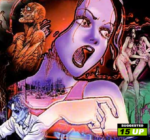
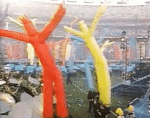
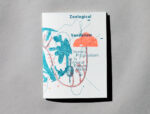







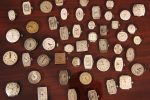

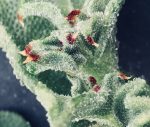
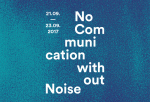



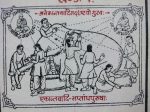
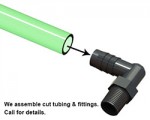
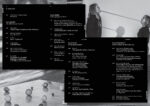
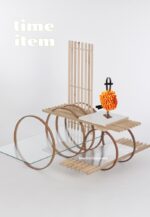
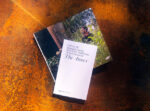
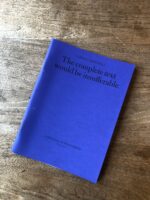
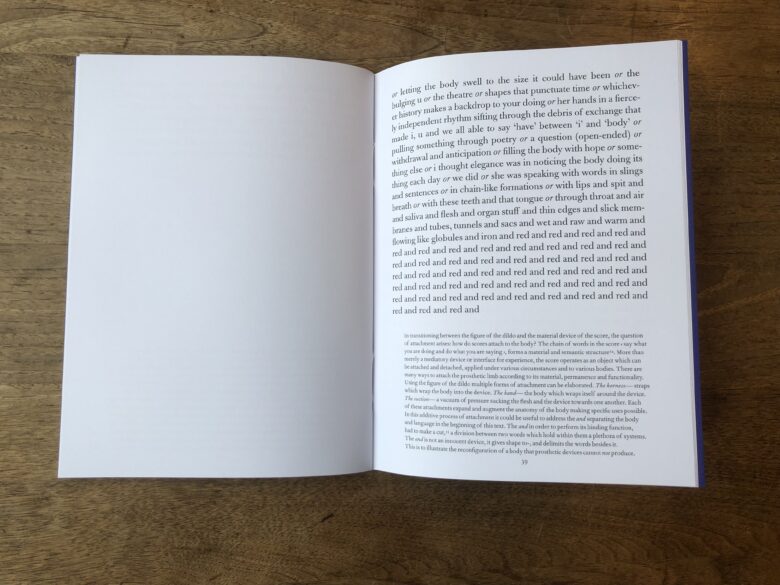

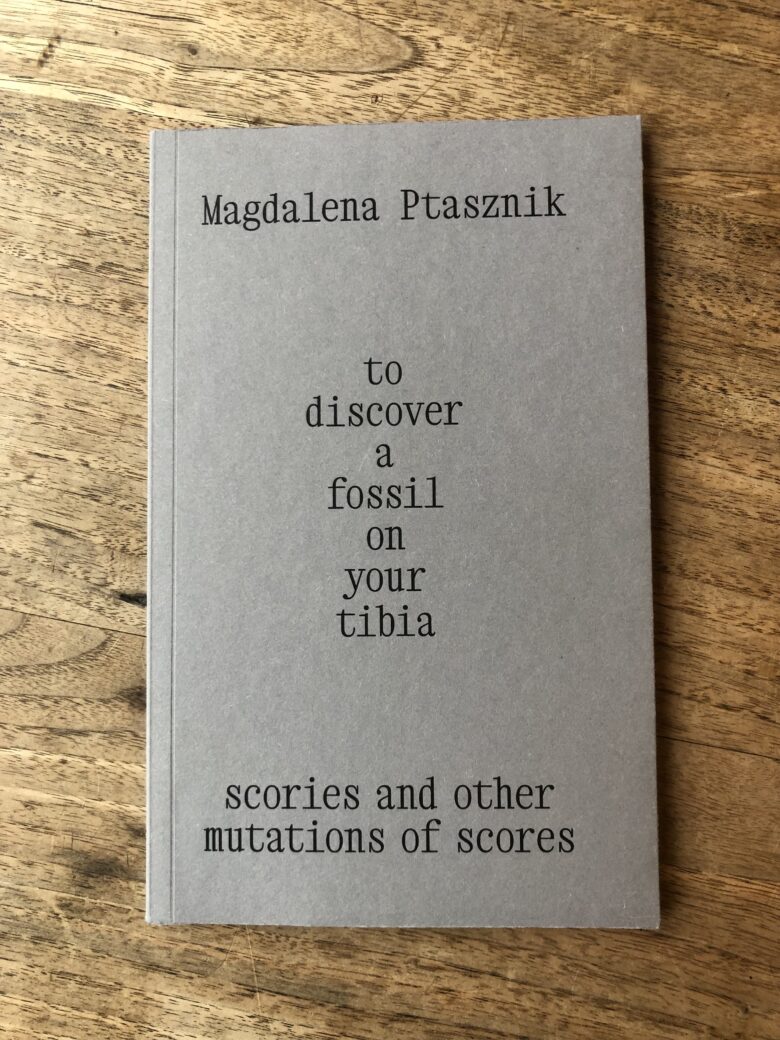
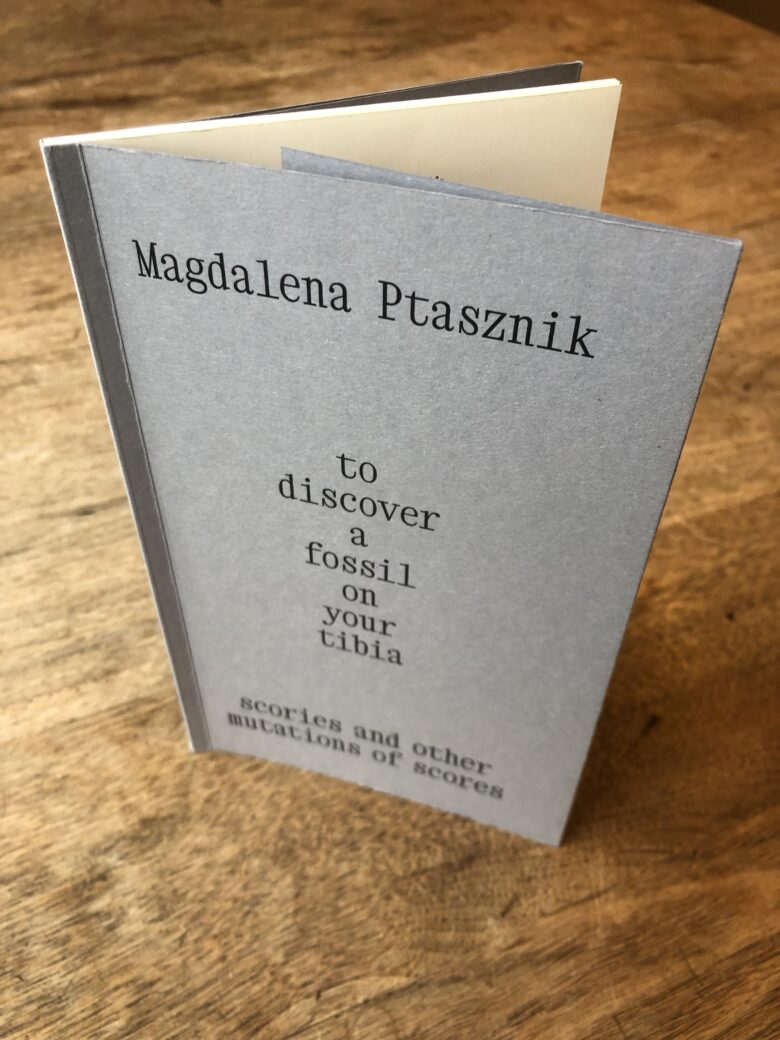 Magdalena Ptasznik[/caption]
Magdalena Ptasznik[/caption]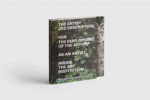
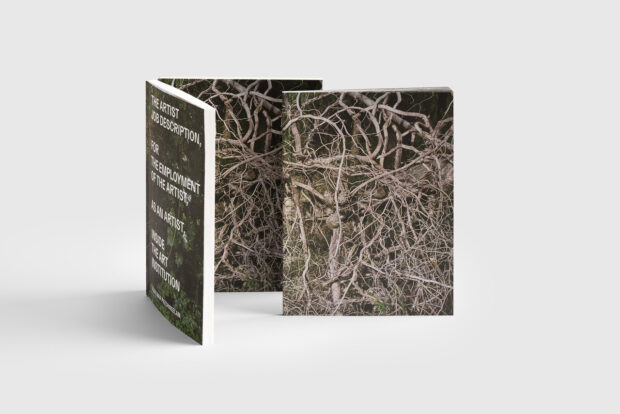
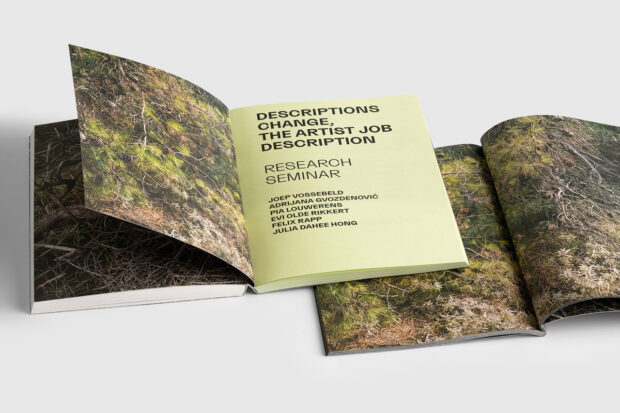
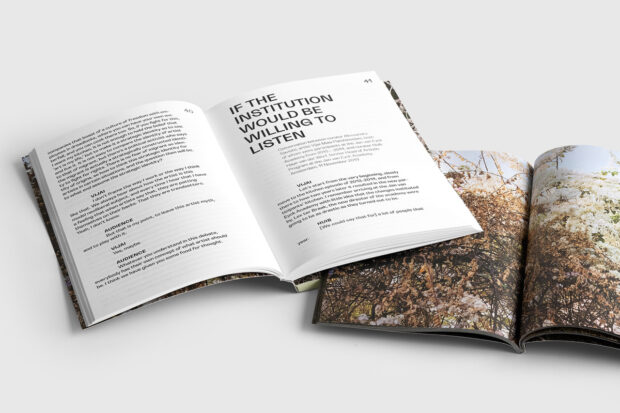


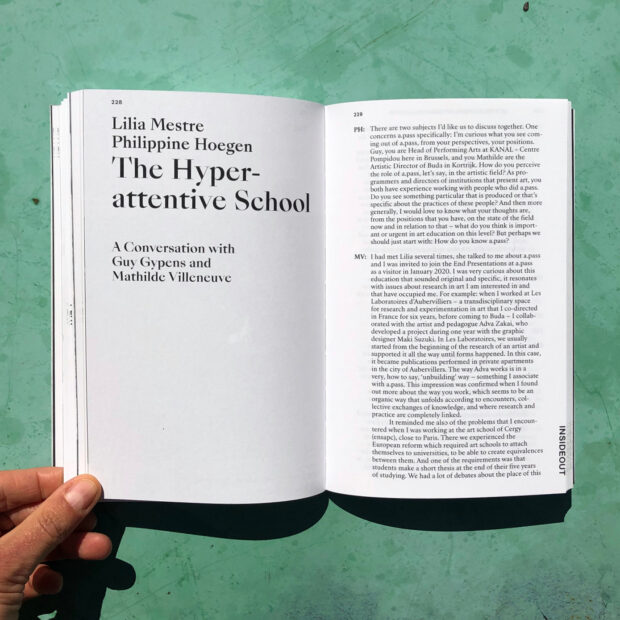
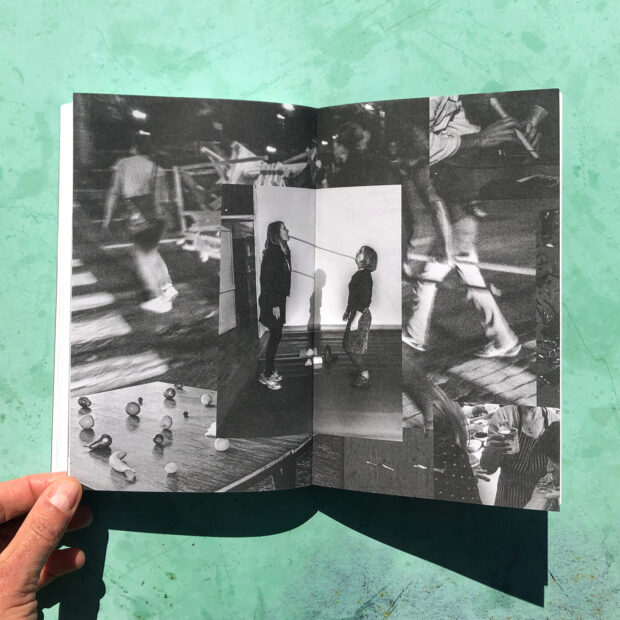

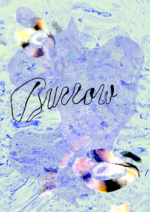
![Arquivo Atlantico [Atlantic Archive]](https://apass.be/wp-content/uploads/2022/02/DSCF0017-150x100.jpg)
